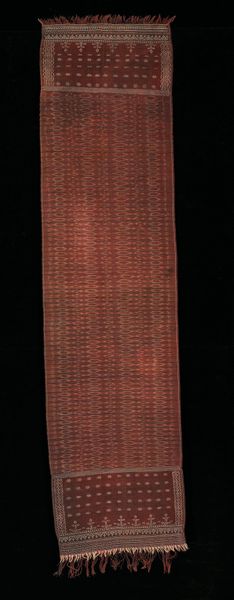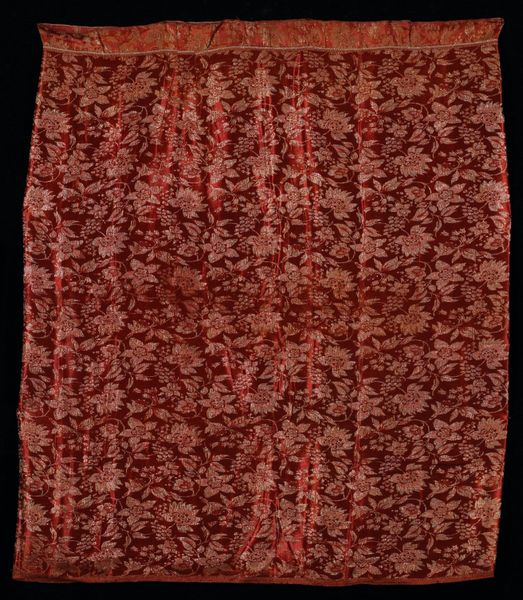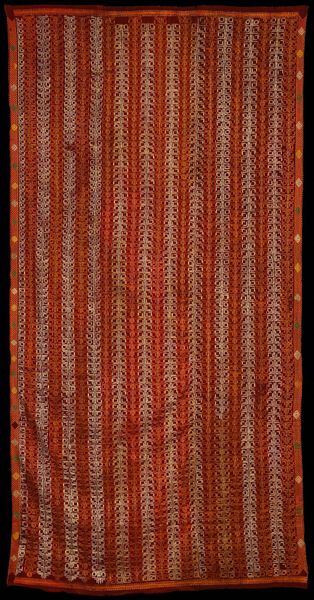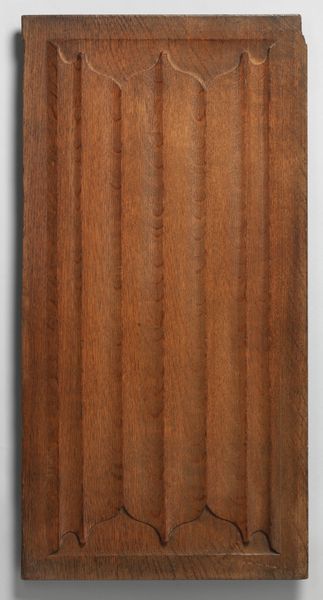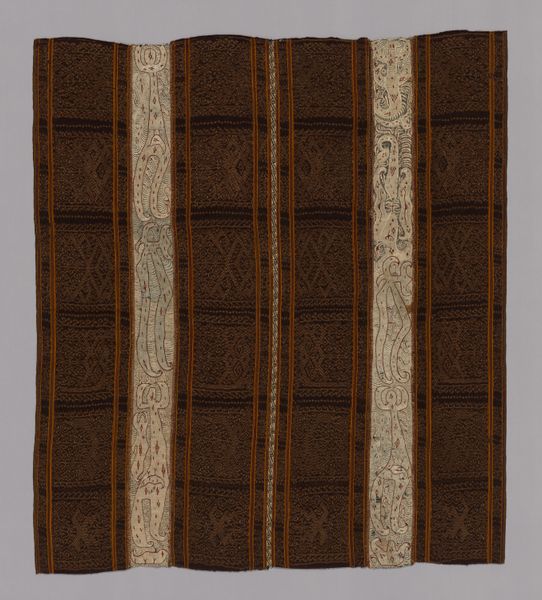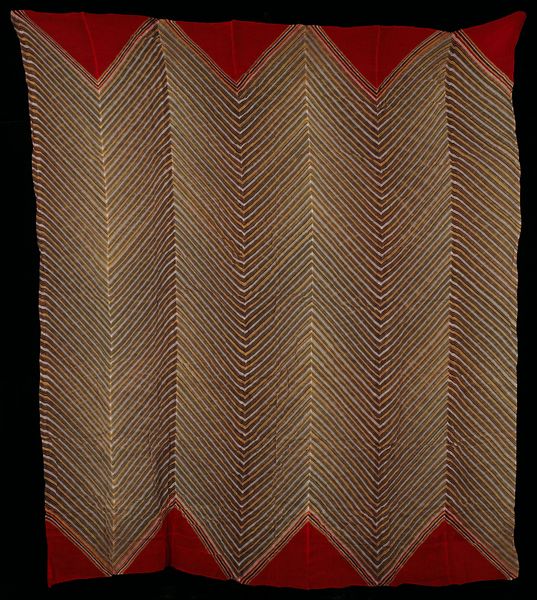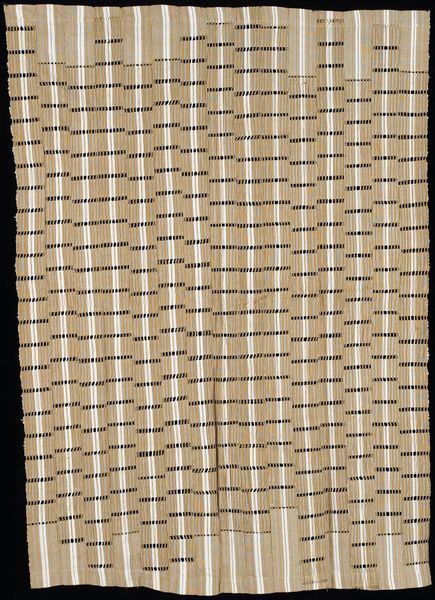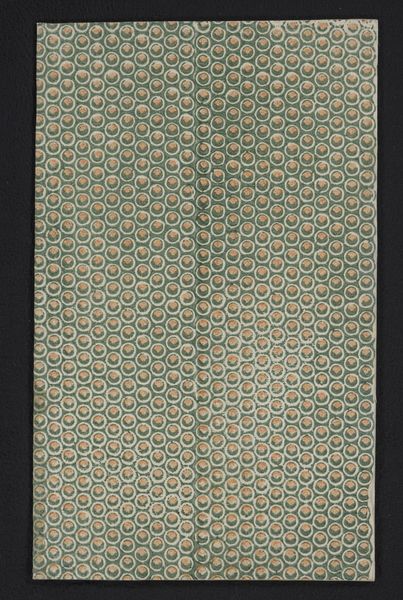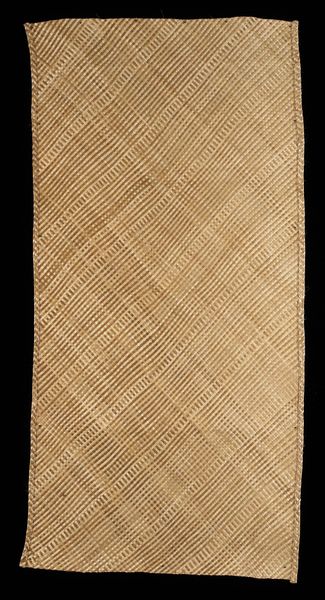
silk, textile
#
silk
#
asian-art
#
textile
#
geometric pattern
#
vertical pattern
#
pattern repetition
Dimensions: 35 3/4 x 214 in. (90.81 x 543.56 cm)
Copyright: Public Domain
This Laharia Sari, of uncertain origin, is made from fine cotton, dyed in gentle stripes of rose madder. It shows us how even the most delicate objects are tied to labor. This textile is a product of tie-dyeing, in which sections of cloth are carefully bound to resist dye penetration. The technique yields patterns associated with the rainy season. Laharia saris require expert craftsmanship and careful planning to achieve the desired effect. The inherent qualities of the cotton, its lightness and breathability, make it ideally suited for this kind of patterning. The production of such a sari involves the collaboration of many hands, from the cultivation and processing of cotton, to the skilled dyers and weavers who bring the design to life. Each step in the production process has a cultural significance of its own, reflecting the social and economic context in which it was created. By recognizing the value of materials, making, and context, we can fully appreciate the sari’s story, beyond simple aesthetic appeal.
Comments
No comments
Be the first to comment and join the conversation on the ultimate creative platform.

